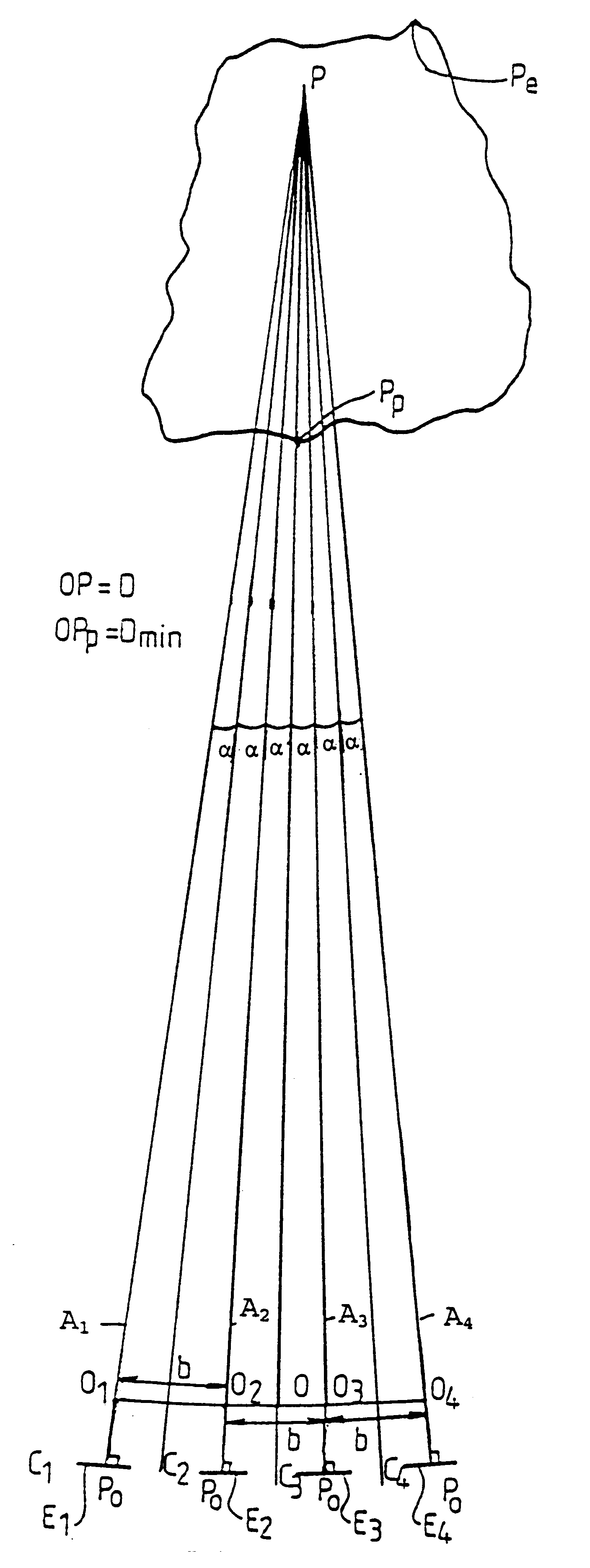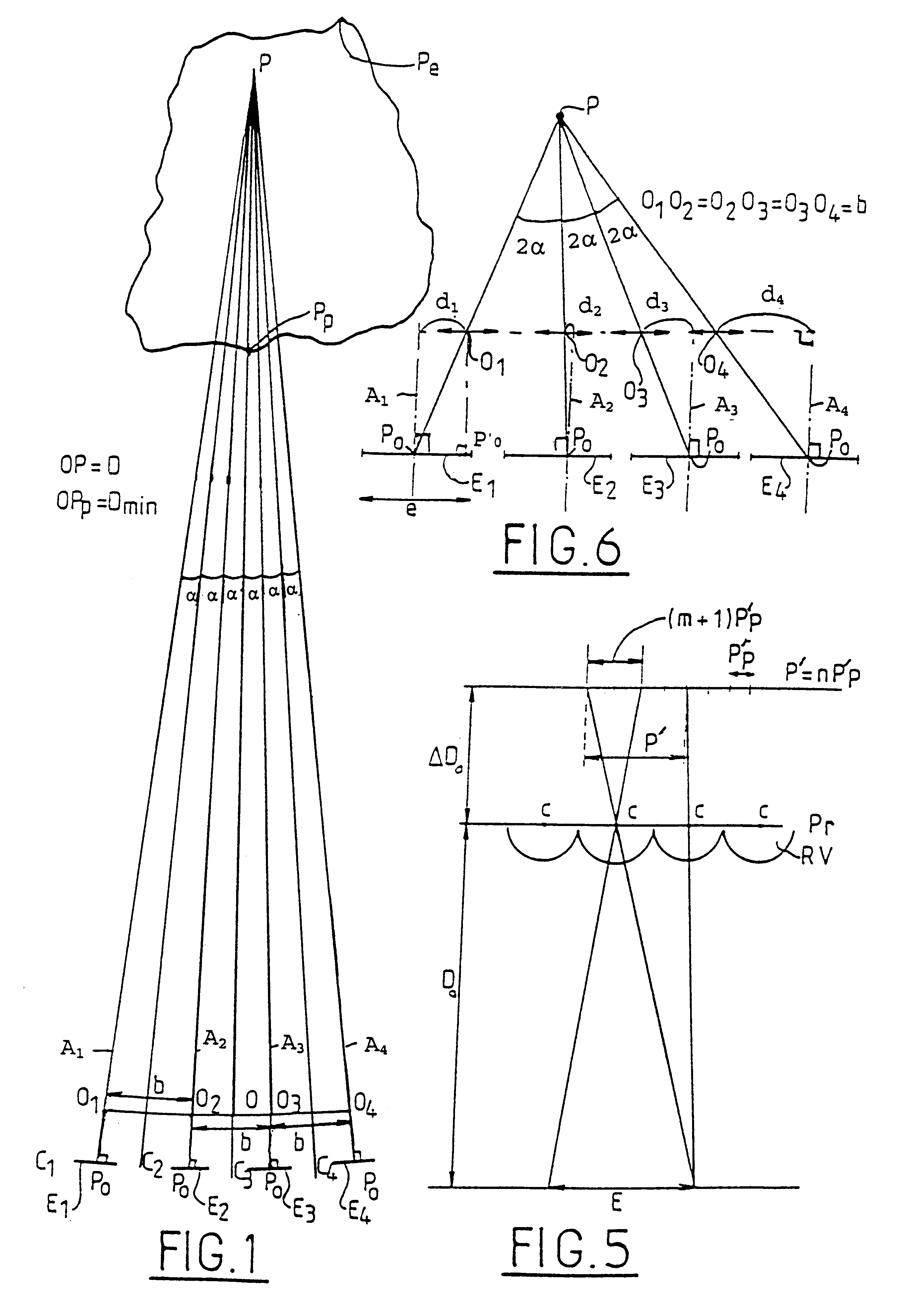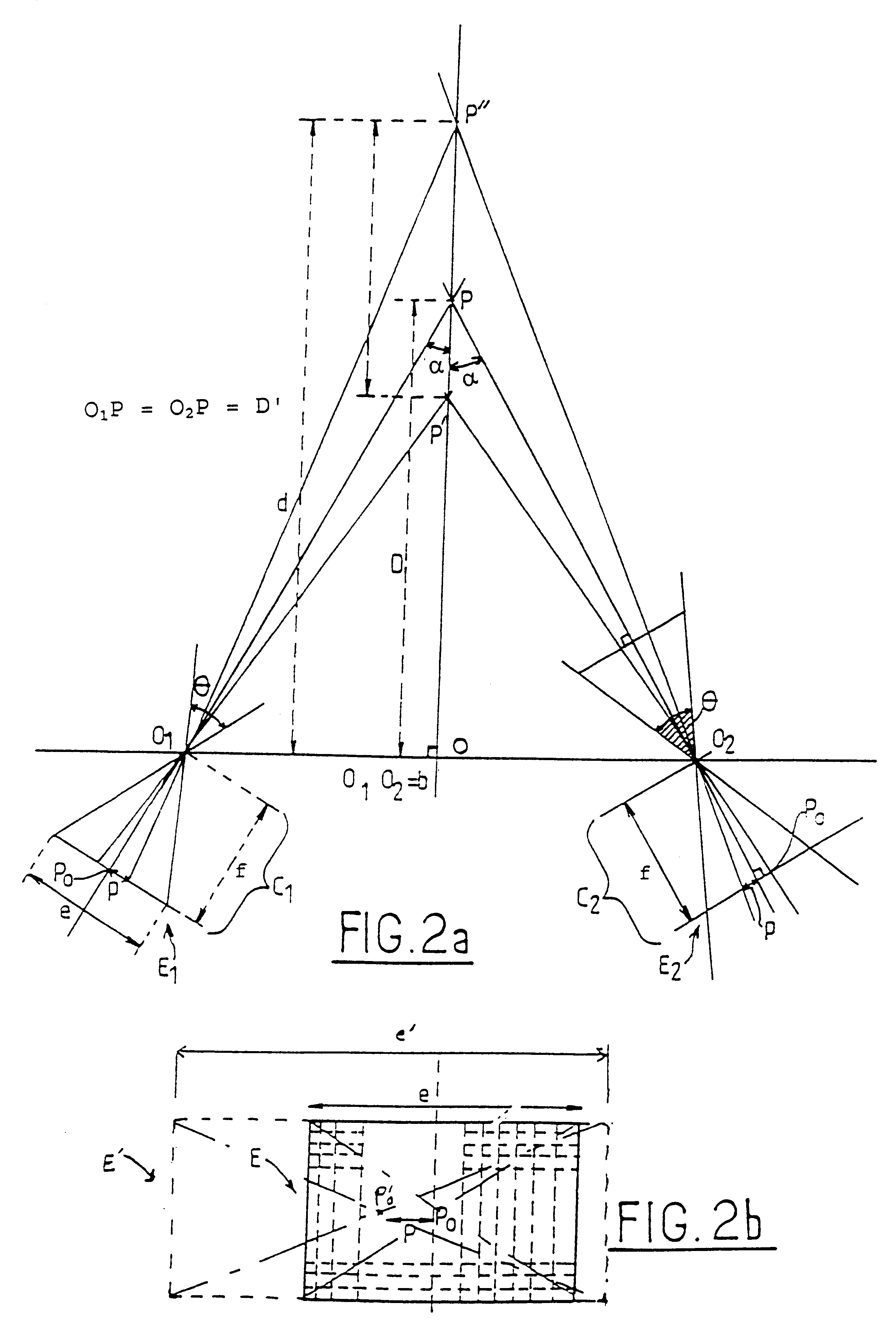Autostereoscopic image acquisition method and system
a technology of image acquisition and image acquisition, applied in the field of autostereoscopic image acquisition method and system, can solve the problems inconvenient use, and no technical solution, and achieve the effect of large computer power consumption, simple structure and high accuracy
- Summary
- Abstract
- Description
- Claims
- Application Information
AI Technical Summary
Benefits of technology
Problems solved by technology
Method used
Image
Examples
example i
Real camera: focal length of real objective lens system to be simulated=200 mm; aperture f / 2; image width=57.6 mm, pixel size=0.1 mm; number n of viewpoints=4.
Focusing can begin at twice the focal length, i.e. 400 mm. This leads to images having the same size in the physical image plane as the filmed objects. The theoretical stereoscopic field of the apparatus with four viewpoints extends between 384 mm and 416 mm. An object whose image has a horizontal dimension equal to one apparent pixel (in fact a lens that is 0.4 mm wide) forms its image at the focal plane on one lens only, and all four pixels are used. If an object is placed at the limits of the theoretical stereoscopic depth of field:
at the lower limit (384 mm), the object appears to stand out from the display screen, the image occupies four lenses with a single pixel per lens as follows:
pixel positions in the columns of four: ##EQU3##
at the upper limit (416 mm), the object appears to be behind the screen and the image occupi...
example ii
Real camera: focal length=50 mm, aperture f / 2, image width=576.times.12.5 p; width of one pixel=12.5.mu.; four viewpoints. The focal length and the stereoscopic base are one-fourth of the values in Example I. The apparent magnification is therefore four. The field angle is halved.
Filming must be at one-fourth the distance to have the same angle 2.alpha.. In simulation, the stereoscopic base b is one-fourth its previous value. The disparity is the same, but the perceived size of background objects is a little large because of the change of field angle (which corresponds to a "zoom" effect). This does not matter since we are capable of correcting mentally so long as the effect is not too great (up to about three times). This evaluation takes account of the fact that we can move closer to the screen without difficulty to see the pairs (1 and 4) or to move away from it to see the pairs (1 and 2) or (2 and 3) or (3 and 4), with this giving rise to an apparent change of the angle subtende...
PUM
 Login to View More
Login to View More Abstract
Description
Claims
Application Information
 Login to View More
Login to View More - R&D
- Intellectual Property
- Life Sciences
- Materials
- Tech Scout
- Unparalleled Data Quality
- Higher Quality Content
- 60% Fewer Hallucinations
Browse by: Latest US Patents, China's latest patents, Technical Efficacy Thesaurus, Application Domain, Technology Topic, Popular Technical Reports.
© 2025 PatSnap. All rights reserved.Legal|Privacy policy|Modern Slavery Act Transparency Statement|Sitemap|About US| Contact US: help@patsnap.com



